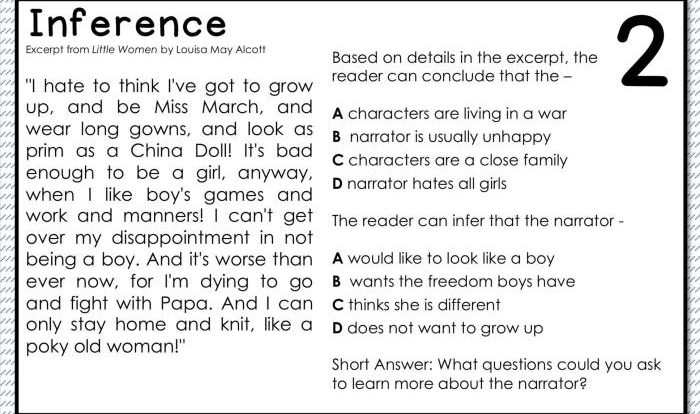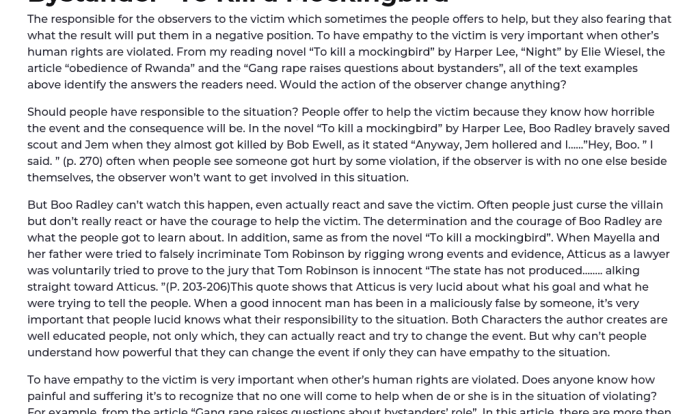Comprehension questions for the raven – Comprehension questions for “The Raven” delve into the enigmatic masterpiece of Edgar Allan Poe, inviting readers to unravel the mysteries and emotions that permeate this haunting poem. Through a series of thought-provoking questions, we embark on a journey to explore the raven’s enigmatic utterances, the narrator’s tormented psyche, and the profound themes that resonate throughout this literary classic.
Prepare to engage with the intricate symbolism, vivid imagery, and psychological depth that make “The Raven” a timeless work of art, leaving an enduring mark on the literary landscape.
Comprehension Questions: Raven Poem
Edgar Allan Poe’s “The Raven” is a haunting and enigmatic poem that explores themes of grief, loss, and the search for meaning. The poem’s central figure, a narrator mourning the loss of his beloved Lenore, is visited by a mysterious raven that repeatedly utters the word “Nevermore.”
This seemingly simple utterance holds profound significance, both for the narrator and for the reader.
Significance of “Nevermore”
The raven’s constant refrain of “Nevermore” serves as a cruel reminder of the narrator’s irreparable loss. It echoes the narrator’s own despair and his growing realization that he will never be reunited with Lenore. The word becomes a symbol of the narrator’s shattered hopes and the futility of his search for solace.
Symbolism of the Raven as a Messenger
The raven in the poem is not merely a bird but a harbinger of doom and despair. As a messenger from the underworld, the raven represents the narrator’s subconscious fears and anxieties. Its presence intensifies the narrator’s sense of isolation and hopelessness, driving him further into the depths of his grief.
Use of Imagery and Figurative Language
Poe employs vivid imagery and figurative language to convey the narrator’s emotional state. The poem is filled with darkness, cold, and desolation, reflecting the narrator’s inner turmoil. The raven’s “shadow” and “evil eye” symbolize the narrator’s own self-destructive impulses and his descent into madness.
Thematic Analysis
Edgar Allan Poe’s “The Raven” explores a myriad of themes, including loss, grief, madness, and hope. These themes are intricately interwoven, creating a complex and evocative narrative that resonates with readers on a profound level.
Loss and Grief
The poem is steeped in the narrator’s overwhelming sense of loss and grief. The death of his beloved Lenore has left him shattered and inconsolable. His despair is palpable in every line, as he grapples with the emptiness and sorrow that consume him.
“Ah, distinctly I remember it was in the bleak December;
And each separate dying ember wrought its ghost upon the floor.
Eagerly I wished the morrow;—vainly I had sought to borrow
From my books surcease of sorrow—sorrow for the lost Lenore—
For the rare and radiant maiden whom the angels name Lenore—
Nameless here for evermore.”
The narrator’s grief is not only emotional but also physical. He is tormented by insomnia and hallucinations, and his mind begins to unravel as he spirals into madness.
Madness and Its Manifestation
The narrator’s descent into madness is a central theme in “The Raven.” His grief and despair drive him to the brink of insanity, and his behavior becomes increasingly erratic and irrational.
The raven, a symbol of death and despair, becomes a catalyst for the narrator’s madness. Its constant repetition of “Nevermore” exacerbates his anguish and drives him to the point of delusion.
“Prophet,” said I, “thing of evil!—prophet still, if bird or devil!—
By that Heaven that bends above us—by that God we both adore—
Tell this soul with sorrow laden if, within the distant Aidenn,
It shall clasp a sainted maiden whom the angels name Lenore—
Clasp a rare and radiant maiden whom the angels name Lenore.”
Quoth the Raven, “Nevermore.”
The narrator’s madness is ultimately his undoing, as he succumbs to the despair and self-destruction that have consumed him.
Hope and Its Glimmer Amidst Despair
Despite the overwhelming themes of loss, grief, and madness, “The Raven” also contains a glimmer of hope. The narrator’s unwavering love for Lenore sustains him, even in his darkest moments.
The raven, despite its association with death, also represents the possibility of redemption. Its repeated “Nevermore” can be interpreted as a reminder of the transience of life and the inevitability of death.
“And the Raven, never flitting, still is sitting, still is sitting
On the pallid bust of Pallas just above my chamber door;
And his eyes have all the seeming of a demon’s that is dreaming,
And the lamp-light o’er him streaming throws his shadow on the floor;
And my soul from out that shadow that lies floating on the floor
Shall be lifted—nevermore!”
The poem ends with the narrator’s soul being “lifted” from the shadow of despair, suggesting that even in the face of profound loss, there is still the possibility of hope and redemption.
Poetic Devices
The Raven by Edgar Allan Poe is a masterfully crafted poem that employs a range of poetic devices to create a haunting and evocative atmosphere. These devices contribute significantly to the poem’s overall tone, rhythm, and meaning.
Alliteration
Alliteration, the repetition of consonant sounds at the beginning of words, is used extensively in The Raven. Examples include “while I nodded, nearly napping” and “startled at the stillness broken by reply so aptly spoken.”
Alliteration creates a sense of rhythm and musicality in the poem, making it more pleasing to the ear and easier to remember. It also emphasizes certain words and phrases, drawing attention to their importance.
Assonance, Comprehension questions for the raven
Assonance, the repetition of vowel sounds within words, is also used effectively in The Raven. Examples include “Once upon a midnight dreary” and “And the silken, sad, uncertain rustling of each purple curtain.”
Assonance creates a sense of harmony and flow in the poem, making it more pleasant to read aloud. It also helps to create a specific mood or atmosphere, such as the eerie and mysterious tone of The Raven.
Consonance
Consonance, the repetition of consonant sounds within words, is used less frequently in The Raven than alliteration and assonance. However, it is still an important poetic device that contributes to the poem’s overall sound and rhythm. Examples include “the silken sad uncertain” and “by the grave and stern decorum of the countenance it wore.”
Consonance creates a sense of cohesion and unity within the poem, helping to bind the words and phrases together. It also adds to the poem’s overall musicality and rhythm.
Rhythm and Rhyme
The Raven is written in trochaic octameter, which means that each line consists of eight trochees, or metrical feet consisting of a stressed syllable followed by an unstressed syllable. This rhythmic pattern creates a sense of movement and momentum in the poem, propelling the reader forward through the narrative.
The poem also uses a consistent rhyme scheme, with each stanza following an ABAB pattern. This rhyme scheme creates a sense of predictability and order, which contrasts with the chaotic and unpredictable events of the poem.
Symbolism and Allegory
The Raven is a highly symbolic poem, with many of its elements representing abstract concepts or ideas. For example, the raven itself is often seen as a symbol of death, loss, and despair. The speaker’s room represents his own mind, which is haunted by grief and memories of his lost love, Lenore.
The poem can also be interpreted as an allegory, or a story with a deeper moral or meaning. On one level, it can be seen as a representation of the speaker’s struggle with grief and his search for meaning in the face of loss.
On another level, it can be seen as a commentary on the human condition and the inevitability of death.
Historical Context: Comprehension Questions For The Raven
Edgar Allan Poe’s “The Raven” emerged amidst the turbulent literary landscape of the 19th century, a time of profound societal change and intellectual ferment.
Poe’s personal experiences played a pivotal role in shaping the poem’s haunting imagery and somber tone. The loss of his beloved wife, Virginia, in 1846, plunged him into a state of deep grief and despair. This emotional turmoil found expression in the poem’s exploration of themes of loss, longing, and the search for meaning in the face of mortality.
Cultural and Literary Significance
Upon its publication in 1845, “The Raven” became an instant sensation, capturing the public’s imagination with its evocative language, eerie atmosphere, and enigmatic symbolism. The poem’s popularity extended beyond literary circles, influencing popular culture and inspiring countless adaptations and interpretations.
Poe’s use of the raven as a symbol of loss and despair resonated deeply with a society grappling with the uncertainties of a rapidly changing world. The poem’s exploration of the human psyche and the nature of grief also struck a chord with readers, establishing “The Raven” as a timeless masterpiece of American literature.
Essential FAQs
What is the significance of the raven’s repetitive utterance of “Nevermore”?
The raven’s persistent repetition of “Nevermore” symbolizes the narrator’s relentless despair and the inevitability of his loss. It echoes his own inner torment, reflecting his belief that his beloved Lenore is gone forever.
How does the raven serve as a messenger, and what is its impact on the narrator?
The raven acts as a harbinger of doom, delivering the crushing news of Lenore’s death and confirming the narrator’s worst fears. Its presence intensifies the narrator’s grief and plunges him deeper into madness.
What literary devices are employed in the poem to convey the narrator’s emotional state?
Poe masterfully employs imagery, such as the “bleak December” and the “night’s Plutonian shore,” to create a somber and oppressive atmosphere. Alliteration, assonance, and consonance enhance the poem’s musicality, reflecting the narrator’s fluctuating emotions.

